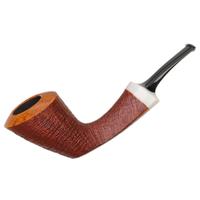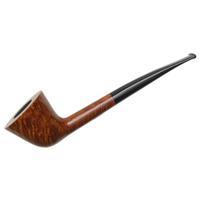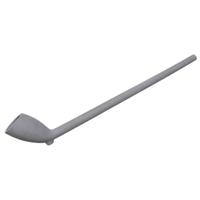Oxy-Clean?
- Thread starter randelli
- Start date
You are using an out of date browser. It may not display this or other websites correctly.
You should upgrade or use an alternative browser.
You should upgrade or use an alternative browser.
- Status
- Not open for further replies.
I've gone through two oxi clean containers in 4 years. I'll everything I use it I think it's bull shit and can uses any other kind of detergent. So I call bullshit. There. My Spanglish should clear any doubt .
Oxiclean doesn't actually remove any oxidation from a vulcanite stem.
Vulcanite is a composite material made from natural rubber impregnated with sulfur. It's the sulfur component of the material that becomes oxidized by light, heat, and oxygen and forms the green/gray discoloration on the surface of pipe stems. Most of the time this discoloration is due to only partially oxidized sulfur.
Partially oxidized sulfur can be stubborn and hard to remove from the surface of a stem. The reason for using oxiclean (as well as heat, bleach, or any of the other methods that get talked about) is to finish oxidizing the surface sulfur. Once the sulfur is fully oxidized it becomes softer and is easier to remove through mild abrasion (magic eraser, micromesh, soft scrub, bar keeper's friend, etc.).
Don't think of oxiclean as the primary removal agent. Rather think of it as a surface prep prior to removal of the oxidation.
Bleach has traditionally been used and is very effective. The problem with bleach is that it is also very harsh and will also attack stem logos as well as any metals that are part of stem construction. Oxiclean is a much milder form of oxidizing agent that solves some of the problems that bleach can present. This is why it has become a more popular method recently than chlorine bleach. The downside is that it's also less effective and doesn't work nearly as well as bleach for quick oxidation of surface sulfur. It's a bit of a trade-off, a less destructive method but requires more "elbow grease" to get the desired effect.
Vulcanite is a composite material made from natural rubber impregnated with sulfur. It's the sulfur component of the material that becomes oxidized by light, heat, and oxygen and forms the green/gray discoloration on the surface of pipe stems. Most of the time this discoloration is due to only partially oxidized sulfur.
Partially oxidized sulfur can be stubborn and hard to remove from the surface of a stem. The reason for using oxiclean (as well as heat, bleach, or any of the other methods that get talked about) is to finish oxidizing the surface sulfur. Once the sulfur is fully oxidized it becomes softer and is easier to remove through mild abrasion (magic eraser, micromesh, soft scrub, bar keeper's friend, etc.).
Don't think of oxiclean as the primary removal agent. Rather think of it as a surface prep prior to removal of the oxidation.
Bleach has traditionally been used and is very effective. The problem with bleach is that it is also very harsh and will also attack stem logos as well as any metals that are part of stem construction. Oxiclean is a much milder form of oxidizing agent that solves some of the problems that bleach can present. This is why it has become a more popular method recently than chlorine bleach. The downside is that it's also less effective and doesn't work nearly as well as bleach for quick oxidation of surface sulfur. It's a bit of a trade-off, a less destructive method but requires more "elbow grease" to get the desired effect.
Nice explanation, torque. My curiosity is raised: Is there an actual difference between the two "types" of Oxi Clean? The label sure doesn't say anything but "no chlorine".
Honest answer is, I don't know. I haven't really seen that much difference in how they perform. I've always just considered them to be different forms for different purposes (cloths, dishwashing, etc.). Basically the ingredients produce hydrogen peroxide when mixed with water. I've never soaked a vulcanite stem in peroxide, but I suspect the results would be similar to using oxiclean, at least for our purposes.
- Status
- Not open for further replies.












.gif)